DIFFUSUM S. Watson, 1890
Distribution : Mexico (Nuevo León, Hidalgo, San Luis Potosí : Sierra Madre Oriental) ; ± 900 m.
Description (according to 't Hart & Bleij in IHSP, 2003) :
Perennial herbs with widely branching rootstock and short stems with slender branches.
Leaves oblong-linear, obtuse, spurred, subterete, 3 - 12 x 1 - 3 mm.
Inflorescences : Flowering branches erect, axillary, bracts lanceolate, 3 - 4 mm.
FIowers 5-merous, sessile, sepals basally slightly connate, very shortly spurred, unequal, ovate to obovate-linear, rounded to subobtuse, 1,5 - 3 mm, petals basally connate, oblong, acute, narrowly mucronate, 4 - 5 mm, white, anthers purple.
Cytology : 2n = 38, 39, 76, 114
Note :
1. IHSP lists S. diffusum and S. potosinum separately. This is not comprehensible as already Charles Uhl – referring to Clausen 1981 – has said : “Sedum potosinum Rose seems not distinguishable” (Rhodora 87, 1985).
2. S. diffusum is closely related to S. alamosanum.
Ray Stephenson : Sedum diffusum S. Watson (1890) & Sedum potosinum Rose (1911)
(Sedum, Cultivated Stonecrops, 1994, pp 248 - 249)
Like Clausen who wrote (1981, 17), "I am unaware of a good means of separation," I, too, find these two species very similar. In fact, there are far more dramatic differences between the two clones of Sedum diffusum that I have studied than between S. potosinum and one of the forms of S. diffusum. Both species form lax, glaucous mats, very similar to the Eurasian S. hispanicum var. minus and the longer-leaved forms of S. dasyphyllum, but the Mexican plants are generally taller. Glaucous-blue leaves are imbricate at first, then more spreading. Old leaves turn a pink shade, then ashy-white. Dead leaves clothe the lower stems. White flowers on scorpioid branches are attractive and are produced in summer.
Habitat : Sedum diffusum is found mainly on calcareous rocks on eastern slopes of the Eastern Sierra Madre with outlying colonies to the northwest. As the name suggests, S. potosinum is a native of San Luis Potosí.
Main points of distinction : Glaucous-blue, rather than papillose, spurred leaves, distinguish these species from Sedum alamosanum, which they can resemble and to which they are obviously closely related. Flowers are noticeably kyphocarpic, a feature that immediately separates the species from S. dasyphyllum. Sedum hispanicum is kyphocarpic, but has hairy carpels. Sepals of the Mexican pair are about half the length of the petals.
Variation : Three distinct forms appear in cultivation. Sedum diffusum 'Potosinum' is the tallest form with stems up to 25 cm (10 in) tall that tend to fall and rise to support themselves. A second form of S. diffusum is so similar that until fully grown, it cannot be distinguished, and even then the difference is merely in size. This form is a little shorter in stature than plants from San Luis Potosí and perhaps more compact. A third form, the most rewarding of the three, is a minor, very floriferous plant with compact carpets completely covered with flowers. Leaves of this minor form tend to be gray. Diploids, tetraploids, and hexaploids exist : n = 19, 38, or 57.
Horticulture : None of the forms are quite hardy for me, but all grow outdoors for most of the year. One form has apparently escaped in France, where it is often believed to be a form of Sedum hispanicum. All forms hate baking conditions under glass and seldom recover from such an experience. Good ventilation seems to be a requisite in hot weather. This species would make a fine carpet-forming plant in warm temperate areas that experience few frosts. It makes excellent ground cover to accompany potted shrubs, looks attractive in a window box, and is bright in a rock garden.
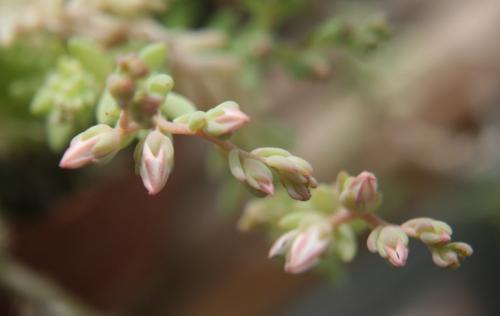
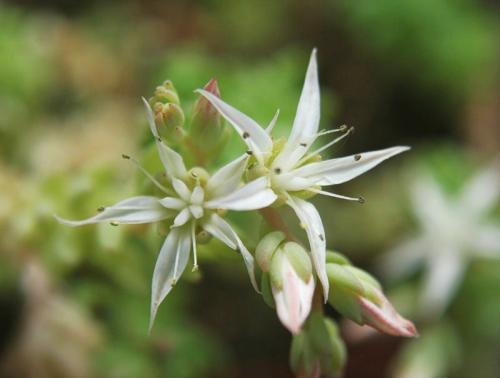
Left Sedum diffusum 'Potosinum', right S. diffusum :
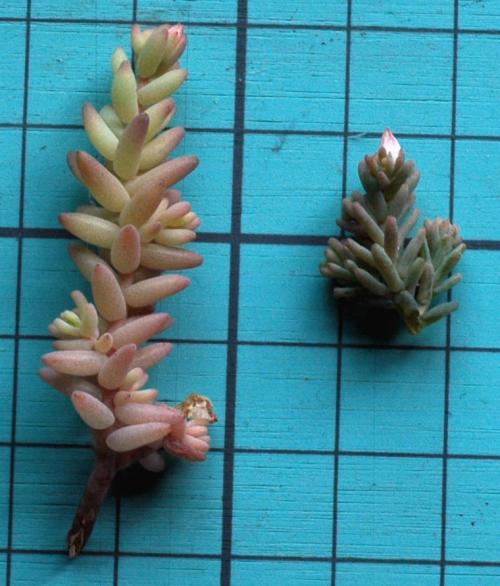
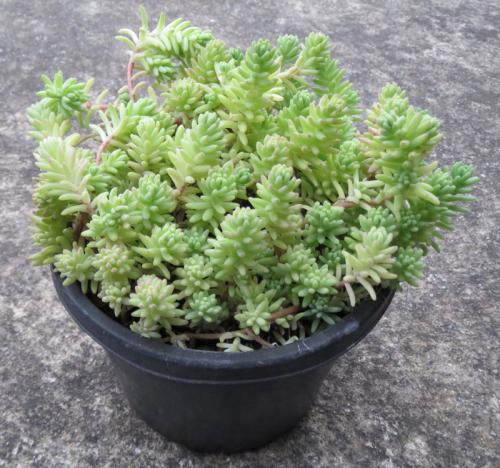
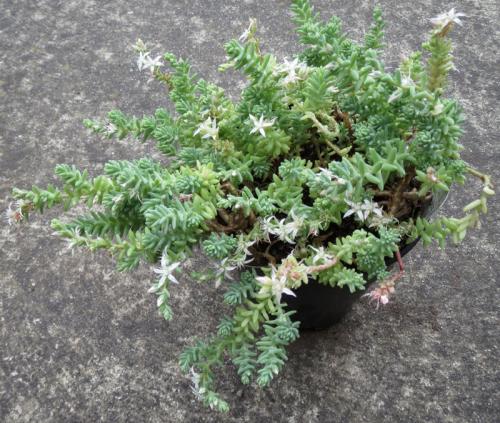
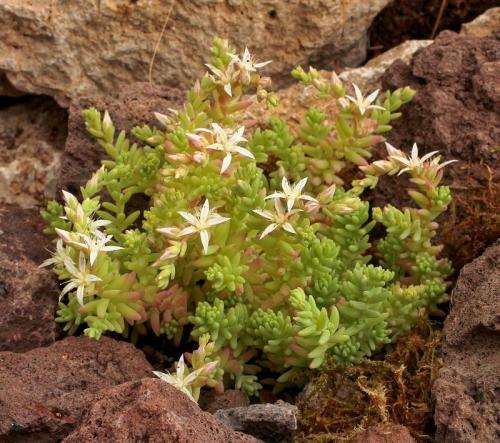
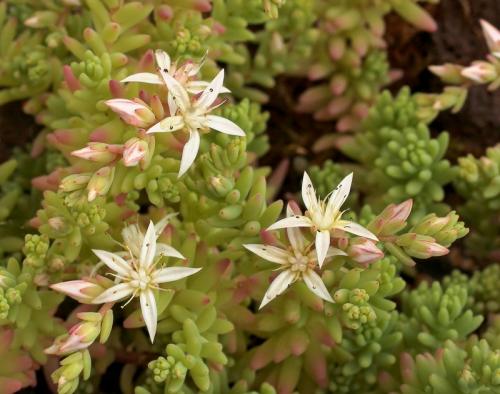
Photos Stefan Neuwirth